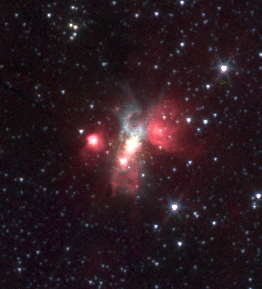Astrophysicists have discovered a potential explanation for jets.
When a significant amount of matter accumulates near a black hole, it begins to attract and absorb it with such force that it becomes physically incapable of "consuming" everything at once. As a result, some of the matter is ejected away from it in two opposite directions from both poles. This creates spectacular plasma flows, known as relativistic jets.
One of the brightest examples is the jet directed towards us from the center of the galaxy M87, where a black hole with a mass of several billion suns resides. There is also a flow from the opposite side, although it is not easily visible. However, for instance, the Centaurus A galaxy is positioned in such a way relative to us that both jets can be clearly observed.
Not only black holes can exhibit such "fountain-like" behavior, but also very young stars that are, in fact, still in the process of being born—these are called protostars. This occurs for the same reason: they have a disk of attracting matter rotating around them, and there is so much of it that some, again, is ejected from the poles of the star.
However, astrophysicists have long understood that this is not purely a mechanical process: no matter how forcefully the plasma is ejected, it must quickly disperse in the cosmic void. Nonetheless, something keeps it in a highly concentrated form over vast distances.
Astrophysicists from Mexico, Argentina, Spain, and India attempted to explain how this works in their recent article for the journal The Astrophysical Journal Letters. They concluded that particles in relativistic jets move along the spiral magnetic field lines. According to the researchers, the most convincing evidence of this is observed in the jet, or as it is also called, the outflow of the supermassive black hole in the galaxy M87. However, it was important for the scientists to determine whether the same mechanism operates in the jets originating from protostars.
This turned out to be very challenging because the jets mainly emit thermal radiation, meaning light from heating, while tracking the magnetic field within them requires radiation generated by other means. Thanks to highly sensitive technology, they were able to identify a suitable target: a protostar in the object IRAS 18162-2048, located approximately five and a half thousand light-years away in the direction of the Sagittarius constellation.

As one might guess, it too emits plasma jets, and it was established that they are rotating: the matter within them moves in twisting spirals. According to astrophysicists, these spirals represent the magnetic field lines within the flow, which twist as the disk of surrounding matter rotates around the star.
The scientists suggest that this is a universal principle for the formation of any plasma jets, regardless of the mass and energy of their source. Debates about the true nature of relativistic jets have been ongoing for several decades, so it is quite likely that this new work will encounter objections from proponents of alternative hypotheses.